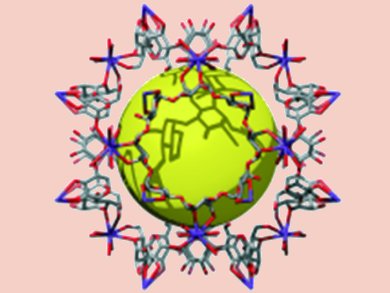In this week’s Review, M. Kwak and A. Herrmann discuss the syntheses and superstructures of hybrid materials made of nucleic acids and organic polymers. What applications are possible with DNA copolymers in particular? The Highlights deal with a natural polyethylene replacement, modular cluster assembly as a strategy for the synthesis of the active site of [FeFe] hydrogenase and the introduction of quadrupole interactions into the peptide design toolkit.
In the Communications section, J. F. Stoddart et al. report how to make a metal–organic framework from edible components. Z. Hou et al. present a copper-catalyzed direct carboxylation of C–H bonds with CO2; S. P. Nolan et al. demonstrate a similar method for the carboxylation of N–H and C–H bonds. D. Amoroso et al. succeeded in the development of a homogeneous catalyst for the solvolysis of ammonia–borane to yield a hydrogen storage system with considerable capacity.



